Helene hit months ago. South Georgia is still waiting for help.
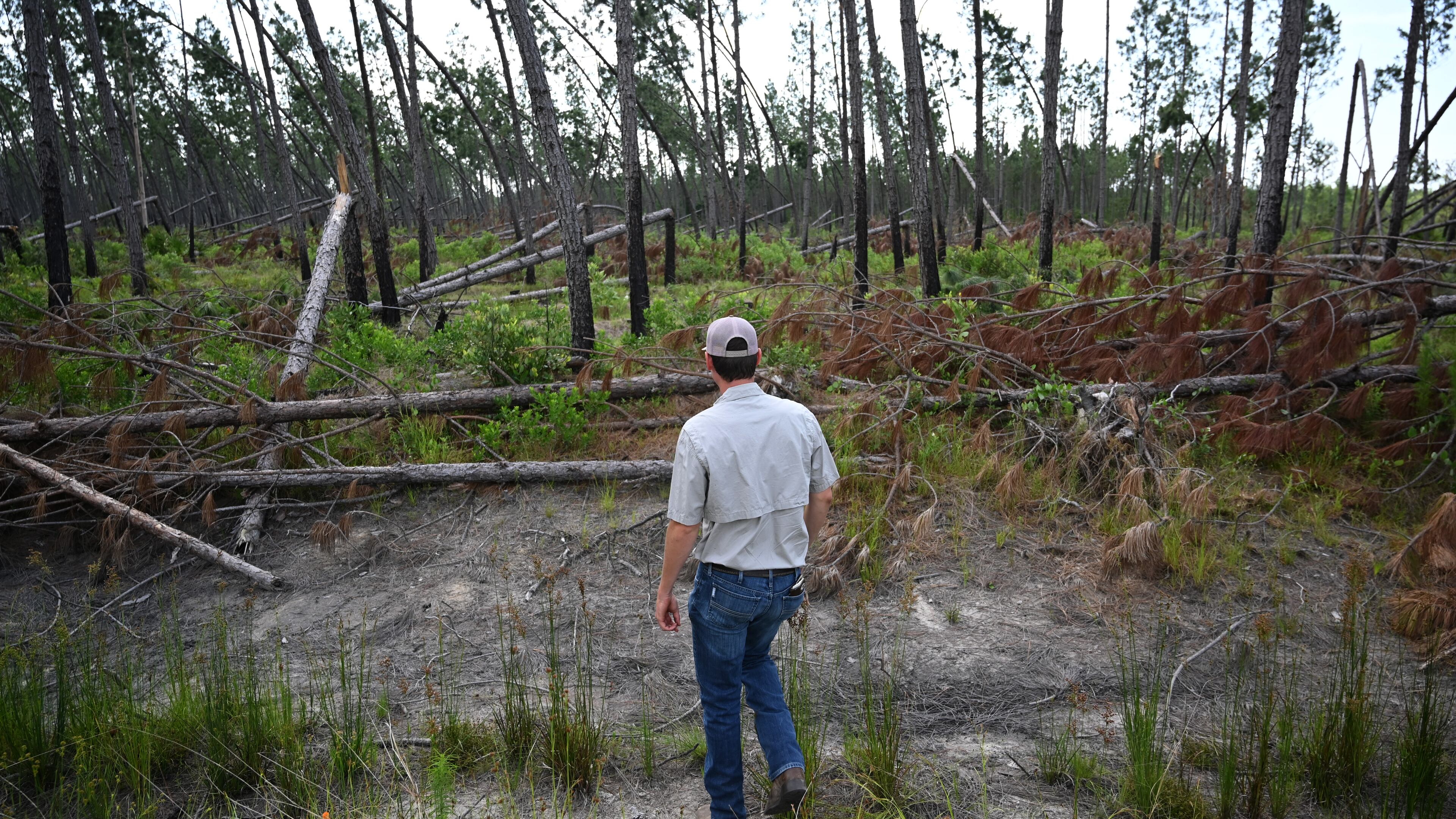
WILSONVILLE — South Georgia farmer Drew Walker knew Hurricane Helene was headed for Florida’s Big Bend region, but couldn’t imagine it would ravage swathes of farm and timberland more than 100 miles inland.
Around 1 a.m. on Sept. 26, the storm’s rumbling winds woke Walker out of bed at his home in Wilsonville, about 25 miles northwest of Waycross. In a panic, he ran toward his front door to peer outside and view the storm’s havoc. But he didn’t have to look outside. Water seeped into his foyer underneath his door and rain showered through holes in his roof.
Even more shocking was what Walker saw the next morning.
“It was just house after house with trees just through them.”
Eight months later, timberland owners and farmers alike are still reeling from the seventh most expensive tropical storm to hit the U.S. since 1980. It tore through swathes of Georgia, Florida, the Carolinas and parts of Tennessee, claiming at least 219 lives and causing at least $78.8 billion in damages, according to federal estimates.
Georgia farmers have received some federal aid through U.S. Department of Agriculture programs to cover some storm cleanup and other costs. And in March, the USDA started distributing $10 billion to farmers across the country dealing with low crop prices and high fertilizer costs.
But as Walker and other farmers are wrapping up planting their crops for 2025, they are still waiting for the largest bucket of aid to come through.
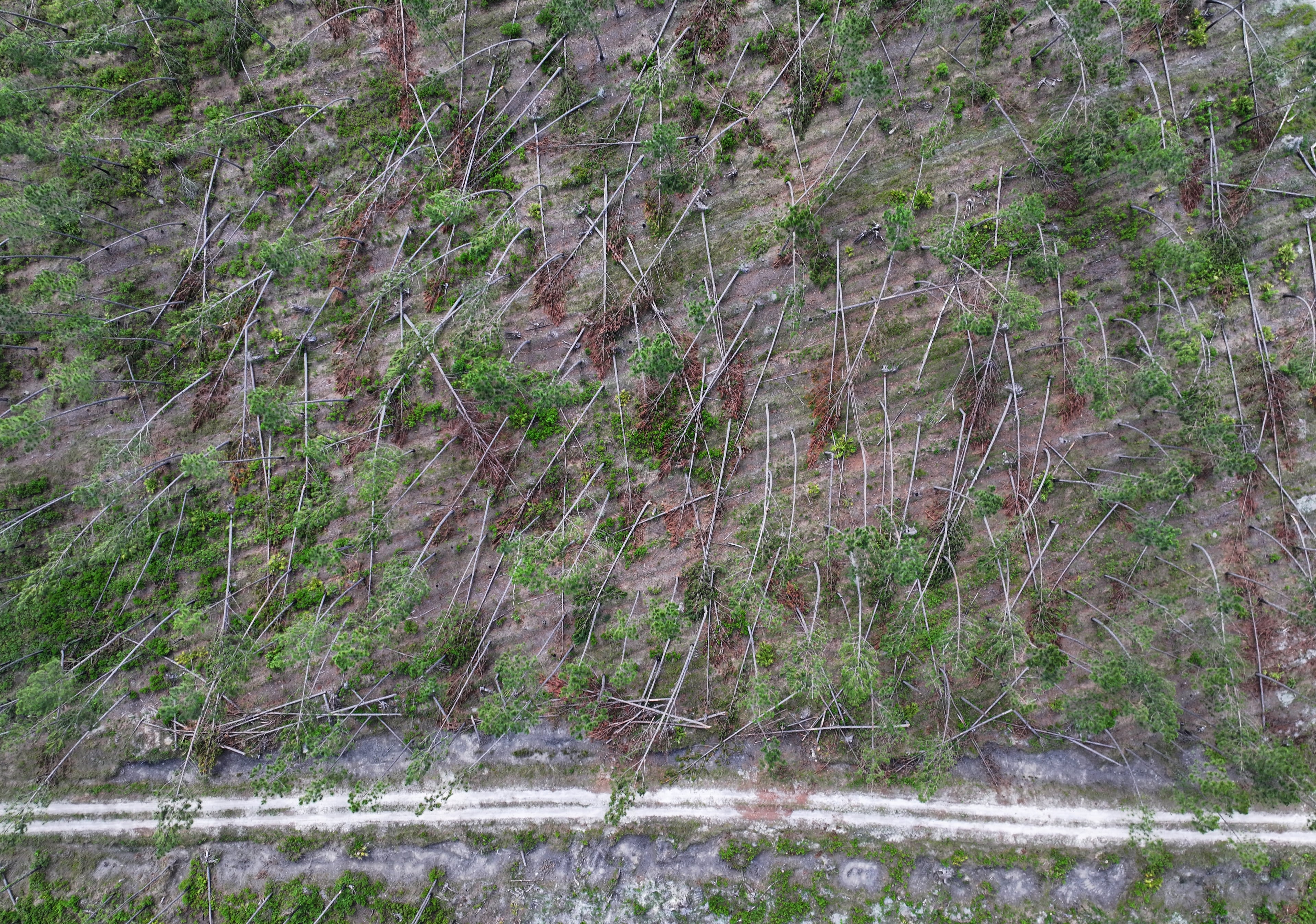
Congress passed a $100 billion disaster aid package in December, with approximately $21 billion of that earmarked for farmers across the nation hurt by Helene and other natural disasters in 2023 and 2024.
In May, the USDA announced its schedule to roll out that aid in stages. Applications for some money that Georgia farmers are waiting on are expected to open in July.
But Georgia and other states need to negotiate with USDA about other assistance in the form of block grants. As of this past week, Georgia had yet to reach a deal with the federal government, Georgia Agriculture Commissioner Tyler Harper said. If a deal is made in the next several weeks, grants could be finalized by June 30, he said.
Harper told The Atlanta Journal-Constitution on Wednesday he plans to use the block grants to cover gaps that other federal aid programs are not covering.
Pressure to reach an agreement is building.
U.S. Sen. Jon Ossoff, D-Atlanta, wrote to Harper in a May 20 letter urging the commissioner to reach an agreement with USDA Secretary Brooke Rollins “as swiftly as possible.” Three days later, Harper wrote back that his staff applied for block grants in April and began meeting with federal officials multiple times a week to negotiate in May.
It’s unclear how much of that assistance will go to Georgia farmers, but it couldn’t come soon enough for them. Many farmers run on tight profit margins in a normal year, but now some are dipping into savings or taking out loans to try to stay afloat.
Walker, a fifth-generation farmer, was betting on his timber as a source of revenue after he retired. When he lost thousands of acres of trees to the storm, it was a crushing blow.
He doesn’t like to rely on the government, but Walker said the assistance the federal government is giving him is not enough to cover the costs of clearing downed trees, let alone replanting new ones.
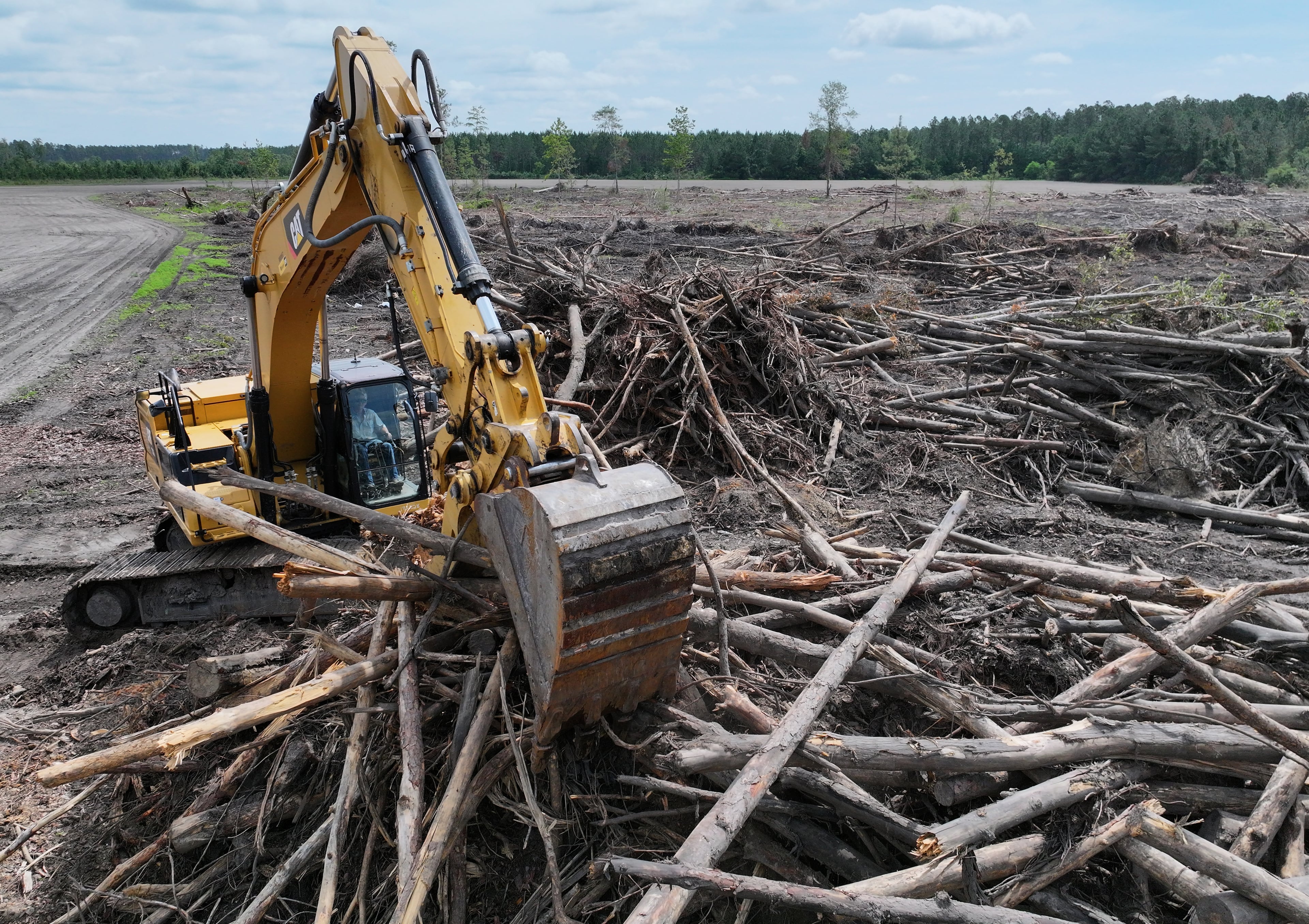
“If I were waiting on that wood to retire in 10 years, it’s not going to be there,” he said.
Now, he plans to repurpose some of his timberland because he cannot afford to wait another 15 to 20 years for new trees to mature. One tract of land he intends to turn into a cow pasture.
Helene caused an estimated $5.5 billion in damage to Georgia’s agriculture industry, according to the University of Georgia. The storm hit the state’s timber industry harder than almost any other sector, Walker said, and unlike other crops, timber isn’t insurable.
He said it could take years before loggers can clear out the deluge of fallen timber across southern Georgia.
“It just really has made a mess of the entire industry,” Walker said, who grows blueberries, cotton, peanuts and other crops.
Mounds of tree debris lie scattered along South Georgia’s two-lane highways, waiting to be hauled to mills to be processed. Sitting for months, some timber is rotting and worthless. And for the wood that is salvageable, it’s worth far less than it was before Helene.
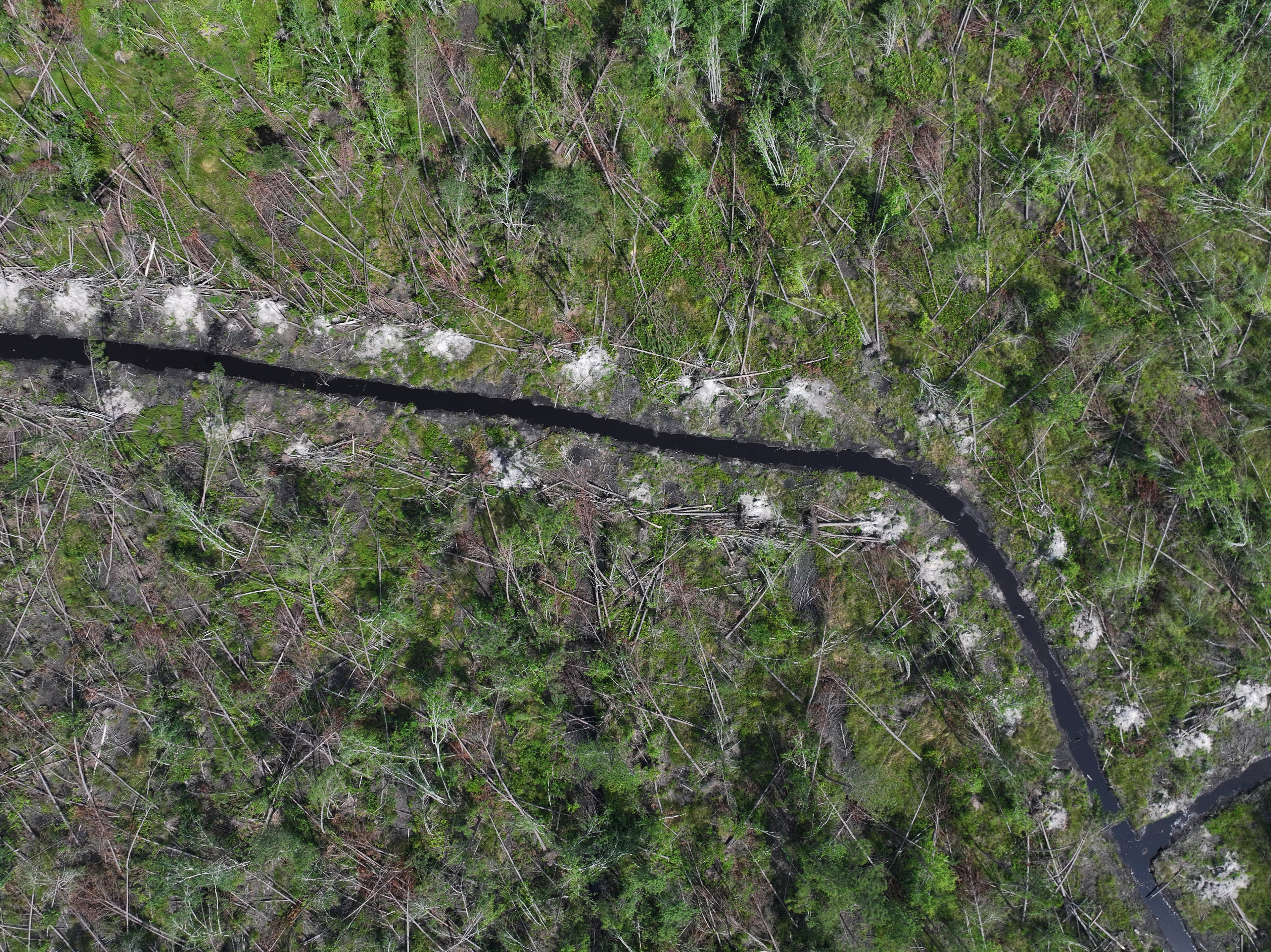
A majority of Walker’s trees downed by the storm are processed for pulpwood for paper and wood pellets. Walker said he could make about $18 a ton before the storm, but now he said that number is closer to $5 a ton.
While farmers waited for federal dollars, state lawmakers passed a series of initiatives to prop up agriculture, Georgia’s largest economic sector.
State legislators approved tax breaks on timber and other agricultural products, as well as nearly $863 million in storm-related spending in the amended fiscal year 2025 budget. About $285 million of that is to fund relief for farmers and timberland owners.
Farmers, cities, brace for future storms
In Valdosta, a city hit particularly hard by the storm, small business owners are back on their feet.
Among the businesses devastated by the storm was Chez What, a market with 50 vendors selling gifts, furniture and antiques. Bricks of the historic building remain scattered across the pavement.
Katie Wilson purchased the building in 2016, saving it from being torn down. Now she plans to demolish what is left.
She said it’s heartbreaking to let the building go, but she is thankful she was able to move to a new space 41 days after the storm. Vendors and customers might have gone elsewhere if she had waited to rebuild at her old location.
“The business that we worked so hard to create would have just ended,” Wilson said.
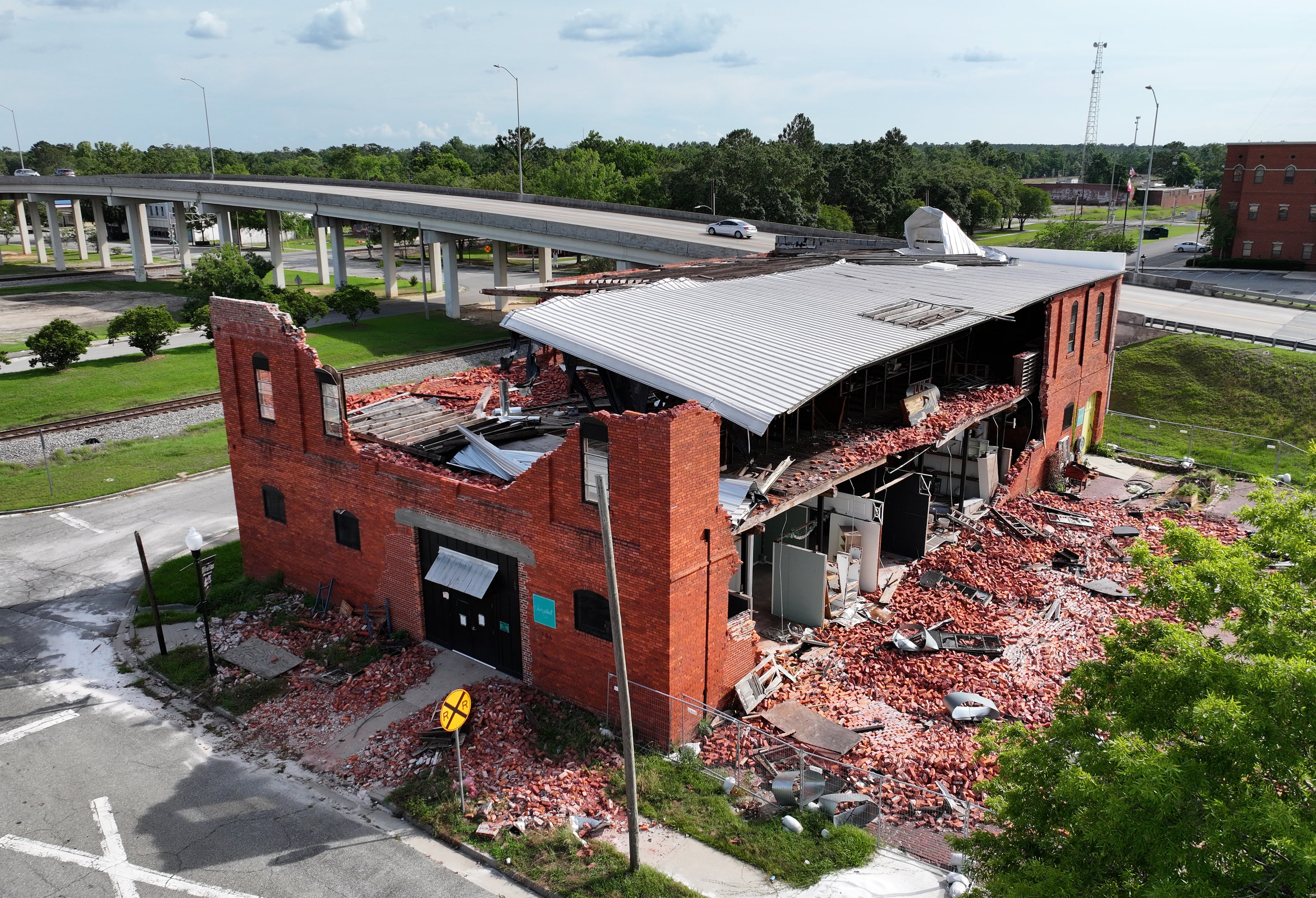
City officials are considering how to become less reliant on federal dollars in preparation for future storms and as the Trump administration plans to cut back on disaster spending.
Mayor Scott James Matheson said the city is considering purchasing more heavy machinery to clear downed trees and other debris in the city.
“We never thought we were coastal, but now we’re having to rethink budgeting,” he said.
Many parts of the city have been repaired, but blue tarps scattered across neighborhoods still cover the rooftops of hundreds of damaged homes and buildings mangled by the storm remain unrepaired.
Helene’s downed trees cluttered the city’s creeks and ditches with debris, causing flooding during November‘s heavy rains.
“We were done,” he said. “That was our fifth major weather event in about an 18-month period of time.”
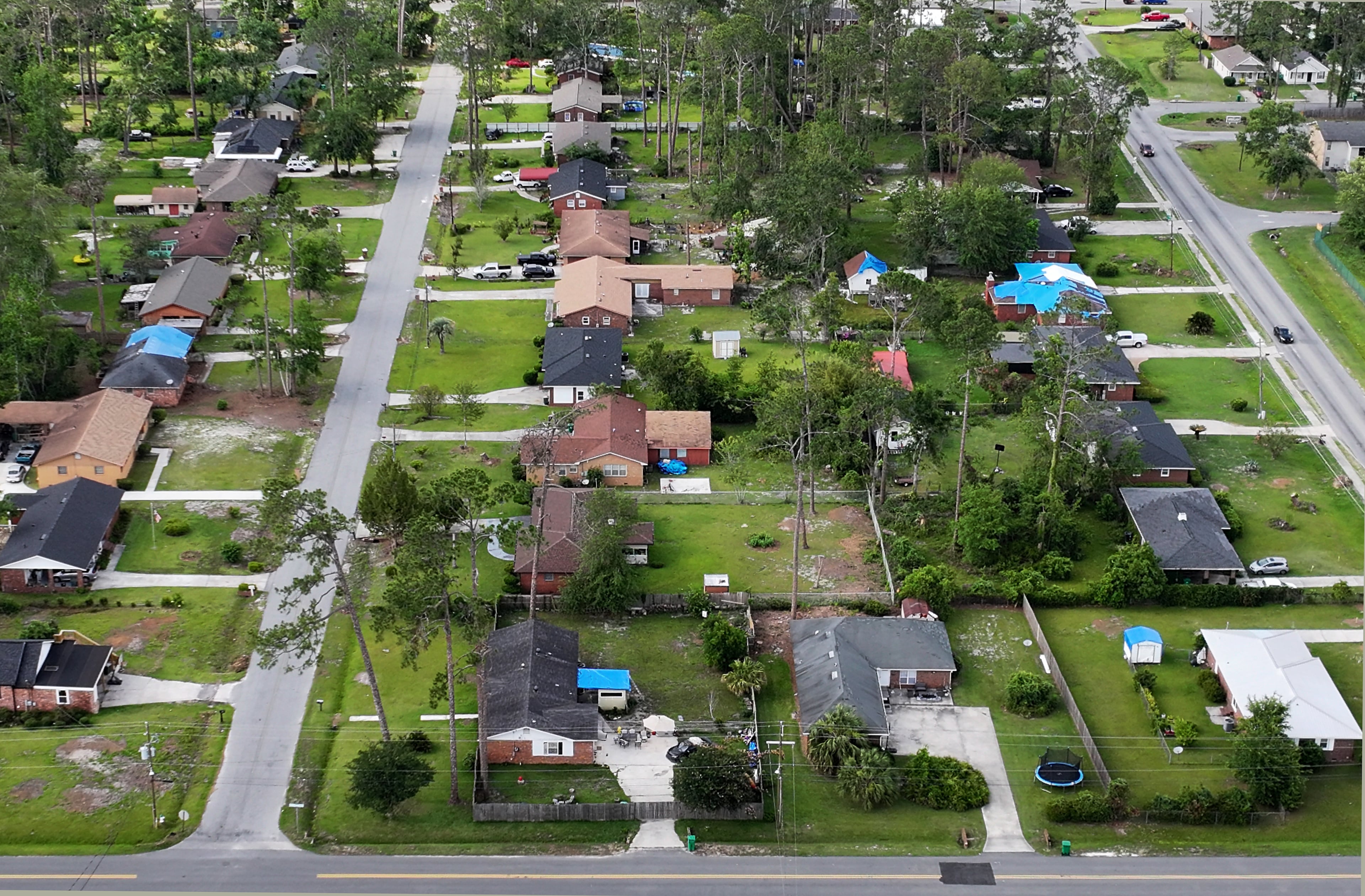
Matheson said the city had to dip into its budget reserves to pay for the cleanup.
About 100 miles from the coast, Matheson has never worried about hurricanes. But 2023’s Hurricane Idalia and 2024’s Helene have made him consider what the city can do to prepare for future storms. “Obviously, something has changed down here,” he said. “I’m not going to say climate change, but a pattern has changed.”
James Burchett, R-Waycross, who championed hurricane recovery legislation during this year’s legislative session, said he doesn’t know what’s on the horizon for hurricanes but thinks that every level of government should be proactive in preparing for future storms.
And as Georgia prepares for likely cuts to federal funding, Burchett said the state should make investments in the private sector, ahead of any future storms to address potential medical, food and fuel needs.
“Resources are going to get thin,” he said.
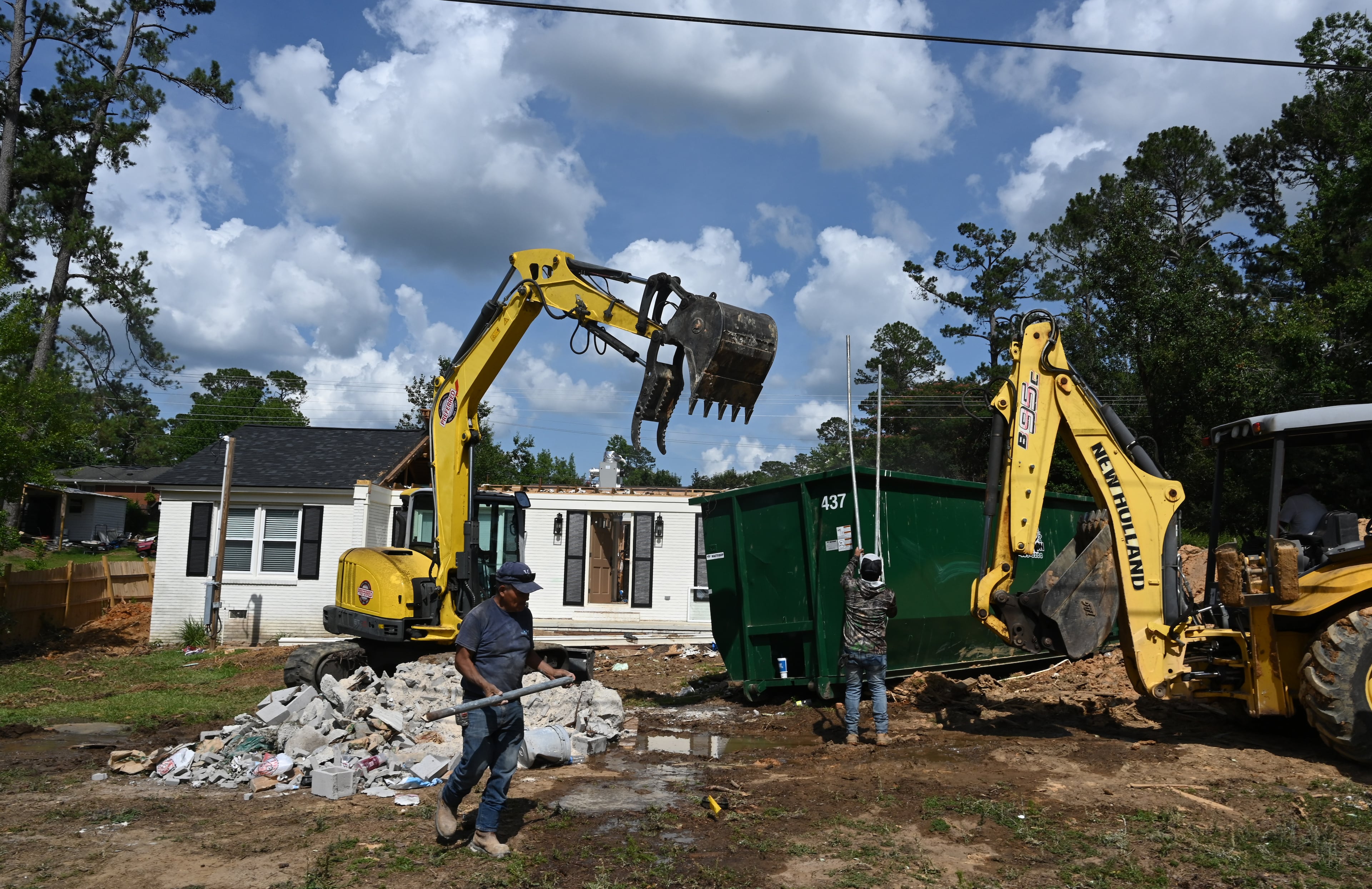
One area where he said there is room for improvement is through access to electricity. He introduced legislation this year that would create tax incentives for businesses, such as convenience stores and hospitals, to install emergency generators. It stalled in the Senate, but Burchett said he plans to bring it back next year.
He said it could help resolve issues like the hourslong lines that drivers experienced at the few gas stations that had power in the days after Helene.
But the storm didn’t just hit forests and cities. It also devastated fields of crops across South Georgia.
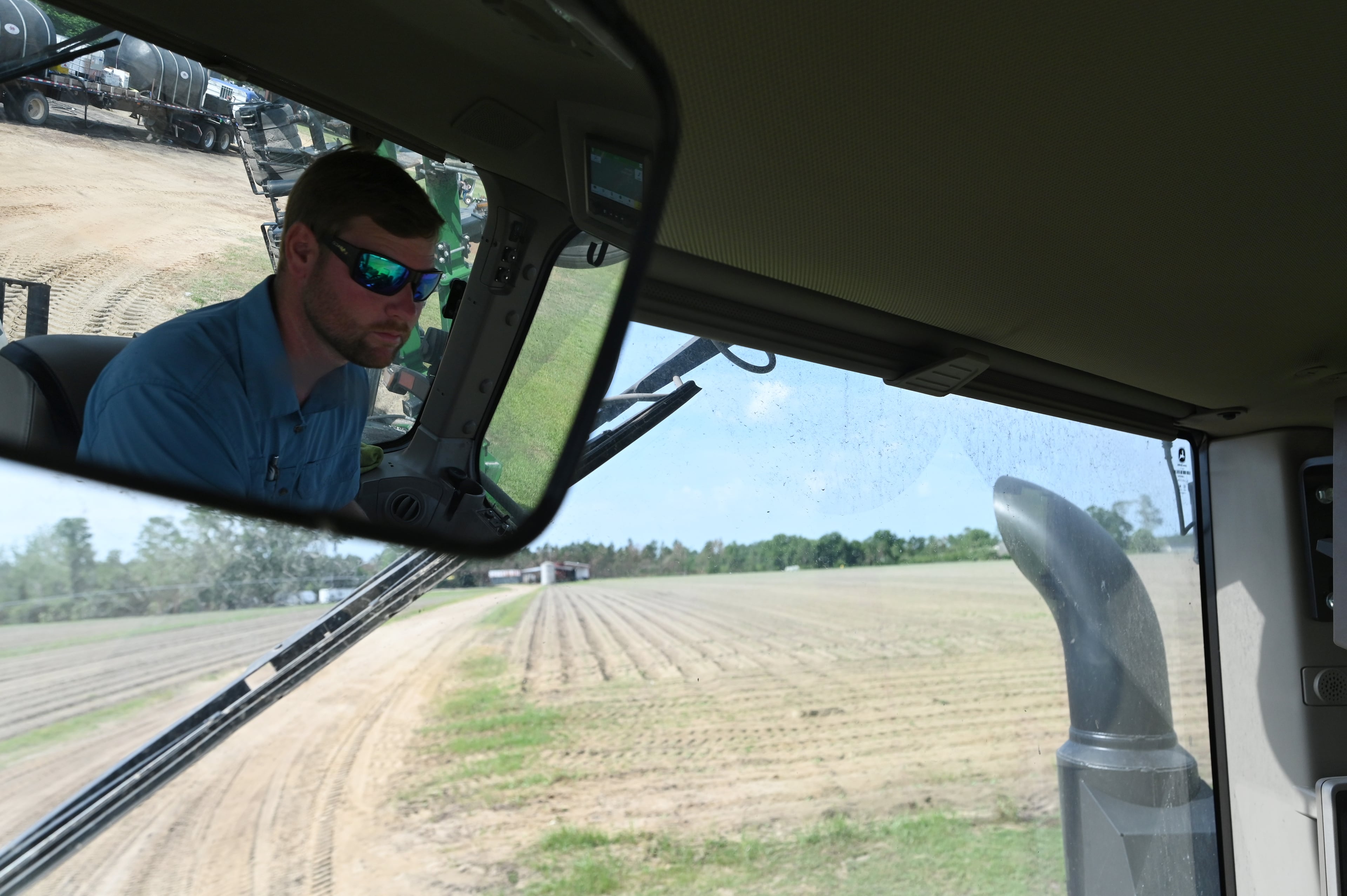
Even without a Helene, cotton farmers were in for a rough 2025. Daniel Raulerson, a cotton and peanut farmer in Douglas, said he is expecting to lose money on his cotton crop this year. He said he paid 65 cents per pound of cottonseed and is expected to lose about 35 cents on every pound he plants.
Raulerson estimates he lost about half his 2024 cotton yield when Helene’s winds barreled through his cotton crop in September, sweeping his cotton out of the fields and into the trees.
“Our fields had already been picked before we even ran the picker,” he said, looking out at a tractor replanting his cotton field.
He said he lost hundreds of thousands of dollars in damaged row crops such as cotton, corn and peanuts. He also said he lost about $250,000 in timber he was relying on for part of his retirement.
“What we’re betting on 30 years from now is no longer there,” said Raulerson, 31.
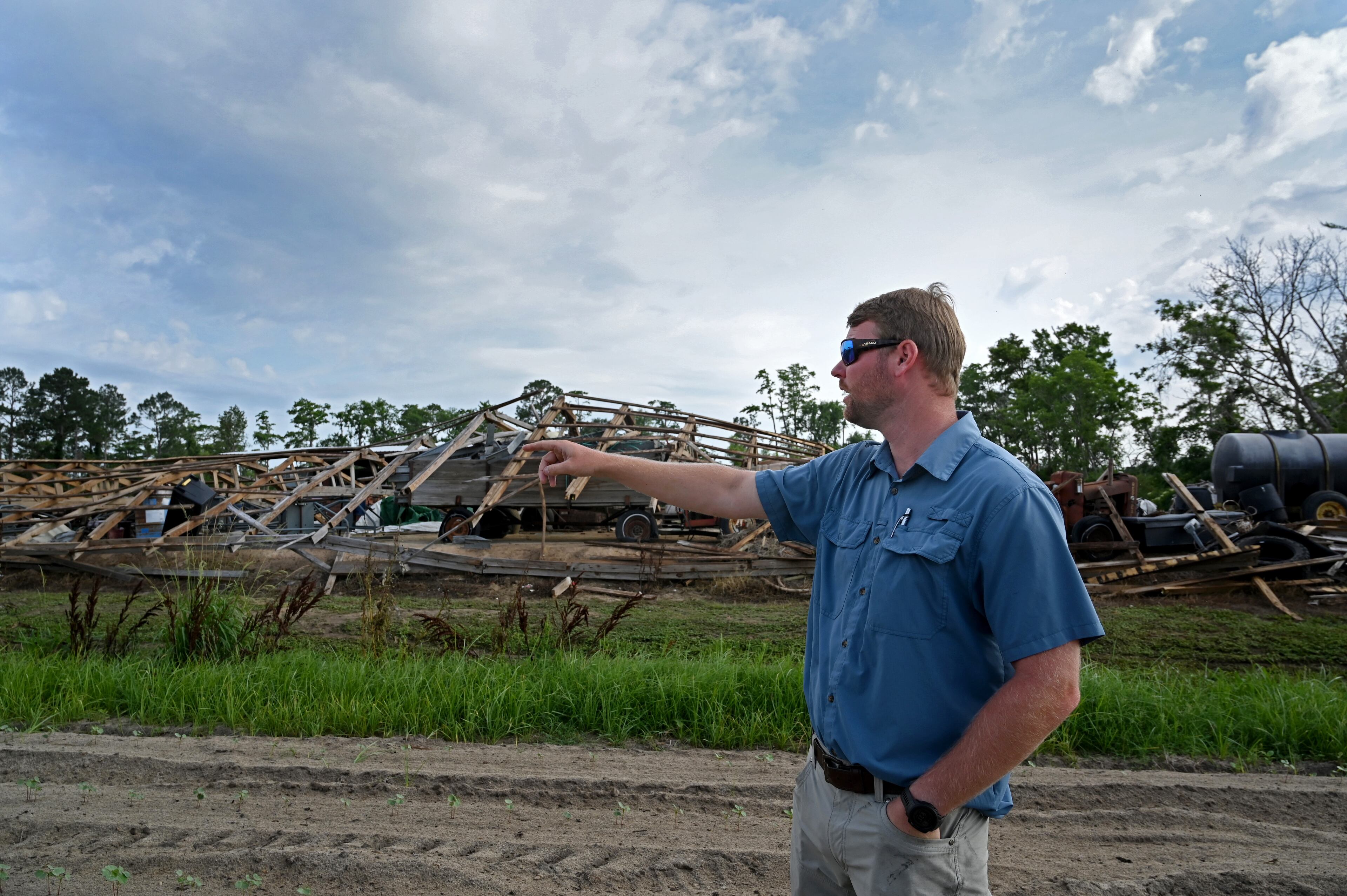
Raulerson said he appreciates the aid from federal and state governments. But still, he said he’s in the worst financial bind he has ever been in and has needed aid for months.
“I think they’re trying, I don’t know how hard, but I’m sure they’re trying,” he said, referring to lawmakers in Atlanta and Washington.
Growers say even with crop insurance and federal and state aid, it is not enough to make them whole.
Hurricane season officially starts June 1. And as it approaches, Raulerson and Walker said there isn’t much they could do to protect their crops from future storms.


